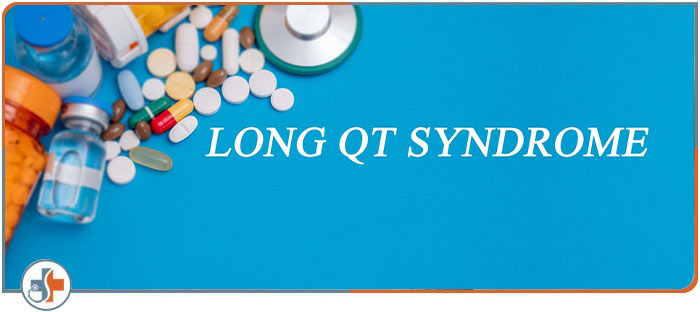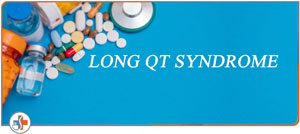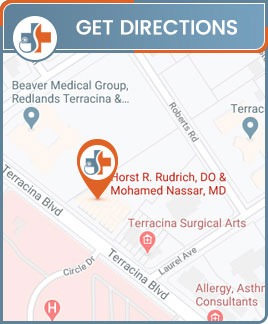Long QT Syndrome Treatment Specialist in Redlands, CA
Long QT Syndrome is a heart rhythm disorder that can cause fast, chaotic heartbeats, potentially leading to fainting, seizures, or sudden death. It is often inherited and can be triggered by stress, exercise, or certain medications, requiring careful management and monitoring. For more information, contact us or schedule an appointment online. We are conveniently located at 255 Terracina Blvd, Suite 105 Redlands, CA 92373.


Table of Contents:
What is long QT syndrome?
What causes long QT syndrome?
What are the symptoms of long QT syndrome?
How is long QT syndrome diagnosed?
How is long QT syndrome treated?
Long QT syndrome (LQTS) is a barely known genetic disorder that is considered to be rare and it affects the heart’s electrical activity, causing abnormally longer QT intervals on an electrocardiogram (ECG). The QT interval is the measurement of the time it takes for the heart to recover from a heartbeat, and in people with LQTS, this interval is prolonged, increasing the risk of abnormal heart rhythms, including torsades de pointes, which can be life-threatening.
LQTS is relatively rare, affecting approximately 1 in 2,500 people worldwide. Always remember, it can happen to anyone, no matter the age or gender. If there’s a family history of LQTS or you are having symptoms of the condition, it is imperative to consult with a cardiologist or geneticist for proper diagnosis and treatment.
LQTS is caused by genetic mutations in one of several genes that regulate the heart’s electrical activity. These mutations might also be inherited in an autosomal dominant pattern, which means that just one copy of the mutated gene is all it takes to cause the condition.
The symptoms of Long QT Syndrome (LQTS) can be very different for every person, and some might not have any symptoms at all. However, common symptoms of LQTS include:
1. Palpitations or irregular heartbeats: People with LQTS may experience abnormal heart rhythms, such as premature ventricular contractions (PVCs), ventricular tachycardia, or ventricular fibrillation.
2. Fainting or syncope: LQTS can cause sudden loss of consciousness due to abnormal heart rhythms, particularly during physical activity, stress, or emotional excitement.
3. Dizziness or lightheadedness: People with LQTS may feel dizzy or lightheaded, especially when standing up quickly or during physical activity.
4. Chest pain: Some individuals with LQTS may experience chest pain or discomfort, which can be due to abnormal heart rhythms.
5. Shortness of breath: In some cases, LQTS can cause shortness of breath or difficulty breathing due to abnormal heart rhythms.
6. Seizures: In rare cases, LQTS can cause seizures, particularly in those with past seizure conditions.
7. Nausea and vomiting: Some people with LQTS may experience nausea and vomiting due to abnormal heart rhythms.
8. Weakness or fatigue: LQTS can cause general weakness, fatigue, or lethargy, which may be more pronounced during physical activity.
9. Rapid or irregular heartbeat: People with LQTS may experience a rapid or irregular heartbeat, which can be felt in the chest or neck.
10. Headaches: Some individuals with LQTS may experience headaches, which can be severe and debilitating.
Diagnosing Long QT Syndrome (LQTS) typically involves a combination of clinical evaluation, electrocardiogram (ECG), and genetic testing. The process usually starts with a thorough clinical evaluation, where a doctor will conduct a physical examination, take a medical history, and ask questions about symptoms such as palpitations, fainting, or seizures.
Next, an electrocardiogram (ECG) is performed to measure the electrical activity of the heart. A prolonged QT interval is one of the diagnostic criteria for LQTS, and an ECG can help identify this abnormality.
To further evaluate for LQTS, a Holter monitor may be used to record the heart’s electrical activity over 24 hours. This can help identify abnormal heart rhythms and prolonged QT intervals that may not be apparent on a standard ECG. An exercise stress test may also be performed to trigger abnormal heart rhythms and help diagnose LQTS.
Long QT Syndrome (LQTS) is typically treated with a combination of lifestyle modifications, medication, and in some cases, an implantable cardioverter-defibrillator (ICD). The outcome of having the treatment is to prevent life-threatening arrhythmias and sudden cardiac death. Patients with LQTS should avoid triggers such as stress, excitement, or certain medications that can prolong the QT interval and worsen their condition. They should also avoid strenuous exercise, especially in hot weather or high-altitude areas.
Beta-blockers, such as propranolol or atenolol, are commonly used to bring the heart rate down and limit the risk of arrhythmias. In some cases, anti-arrhythmic medications like flecainide or sotalol might be given to regulate the heart rhythm and limit the risk of arrhythmias. For more information, contact us or schedule an appointment online. We are conveniently located at 255 Terracina Blvd, Suite 105 Redlands, CA 92373. We serve patients from Redlands CA, Loma Linda CA, Highland CA, San Bernardino CA, and Grand Terrace CA.

Additional Services You May Need
▸ Geriatric Medicine Doctors
▸ Diabetes Care
▸ Joint Injections For Arthritis Care
▸ Heart Disease
▸ Primary Care Physician
▸ Telemedicine
▸ Primary Care Doctor
▸ Internal Medicine Doctor





